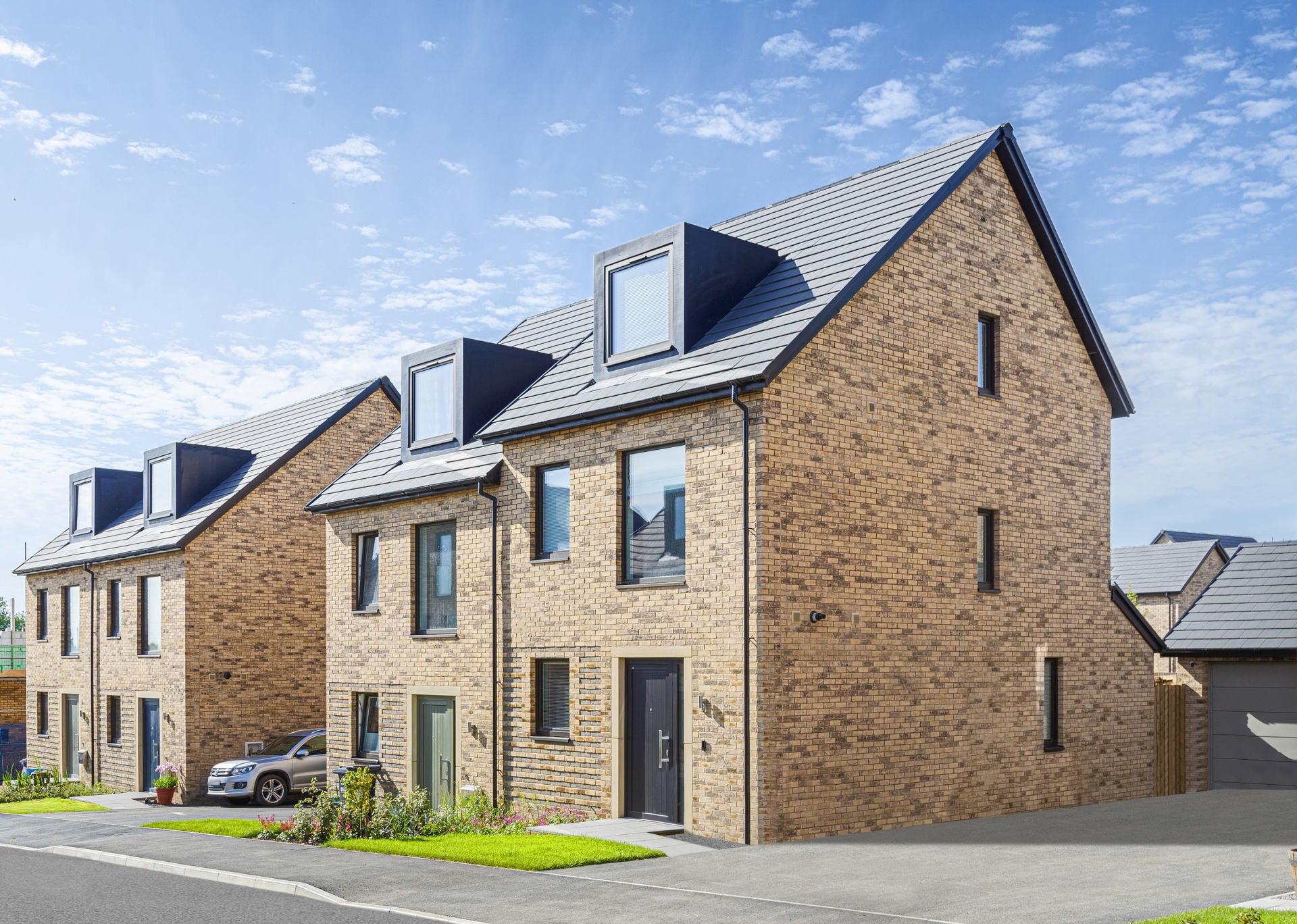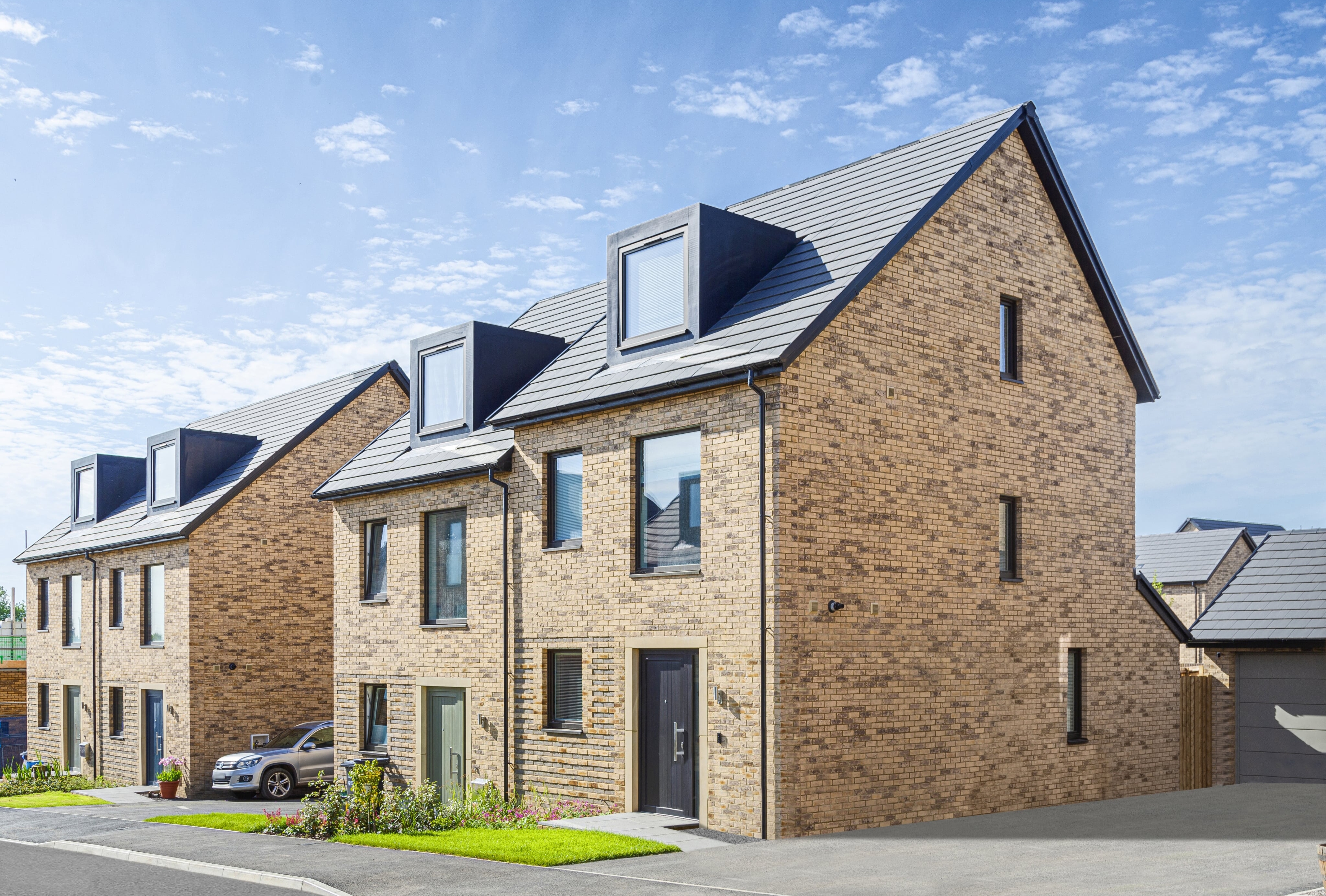Why smart property investors should choose new-builds
Sales data shows recent trends in buyers' preferences are changing. Last year, the average premium for a new-build property compared with an existing home in mainland UK was nearly £74,000, or 29%. Investors are choosing new build. Find out why.

Aspiring to own your own home is often seen as a uniquely British characteristic, perhaps because the weather makes us spend so much time in them. It’s often assumed that house buyers prefer older properties with lots of character and period features. A study in 2017 confirmed that three of the top five most desirable property styles in the UK are, in fact, Georgian detached (23%), pre-Georgian detached (10%) and Edwardian semi-detached (9%). And in a survey of homeowners and property investors earlier this year, almost half of respondents (48%) described modern developments as “usually unattractive”.
But sales data show the situation is changing. Last year, the average premium for a new-build property compared with an existing home in mainland UK was nearly £74,000, or 29%. This market buoyancy was also underlined by demand for off-plan properties, which rose by 2% to 37% over the same period.
What is behind the increased appeal of new-builds?
In large part, this is being driven by a change in attitudes towards new-builds among buy to let landlords, in response to new legislation on energy efficiency.
It all boils down to Energy Performance Certificate (EPC) ratings. An EPC rating is based on a points system, where every element of a Standard Assessment Procedure (SAP) is added up to give you a total score. For example, to get the gold-standard A rating (92-100 SAP points), a house would need to release minimal carbon emissions into the atmosphere: no gas central heating; low-energy lighting throughout; double- or triple-glazed windows throughout; cavity wall and loft insulation; perhaps even solar panels. There are various ways to boost an SAP rating, such as installing a condensing boiler (around 50 points) or cavity insulation (around 15 points). (But low-energy lighting and double-glazing, perhaps the simplest things for a home-owner to improve, will only give you an uplift of around 6 SAP points in total.)
Before 2018, a property’s EPC rating was unlikely to be a factor in most people’s property searches, which is fortunate since almost 80% of housing in the UK pre-dates the 1990s, when energy efficiency design began to be regulated. In fact, 30% of the UK’s current housing stock was built over 100 years ago, which goes some way to explain why the average energy rating in the UK is D (55-68 SAP points).
Buy to let landlords are driving demand
But in 2018, in anticipation of the Government’s 2050 net-zero target, the MEES (Minimum Energy Efficiency Standard) regulations were introduced. These require all properties that are let or sold in England and Wales, including existing tenancies, to be rated E (39-54 SAP points) or above. The Government is currently considering raising this target to a C (69-80 SAP points) for all new tenancies by 2025 and all existing tenancies by 2028. And there is talk of this being raised still further to a B rating (81-91 SAP points) by 2030.
Given that an EPC rating is only valid for ten years, a buy to let landlord would be well-advised to buy a property that is already C-rated, particularly as the cap on the cost of EPC improvements is widely expected to be raised from £3,500 to £10,000, destroying yields still further. Research supports this, showing that around 50% of buy to let investors bought properties with an EPC rating of A-C in the first two months of 2022, the highest figure ever recorded. For comparison, in 2021 that figure was 39%, and in 2020 just 33%, showing how quickly the new regulations are making an impact.
Homeowners are increasingly choosing new-builds
In the survey of desirable property styles mentioned above, among the preference for period properties Modern/New-build 1990s (15%) and Eco-build 2000s (13%) came in second and third place, suggesting that homebuyers are progressively being drawn to new-build homes. Other research earlier this year also highlighted a marked shift in buyer perceptions of new-builds, with half of those surveyed (50%) saying they would be willing to buy a new-build for their next home, a figure which jumped to nearly two-thirds (65%) among younger buyers (aged 18-34). Nearly 40% of home buyers said they had viewed new-builds as part of the search for the last property they bought.
Energy efficiency is key to new-builds’ appeal
With the rising cost of gas and electricity uppermost in people’s minds, as well as an increased awareness of the part we can all play in reducing carbon emissions, home buyers are starting to factor energy efficiency into their purchasing decisions. Research suggests the main attraction of new-builds is their improved energy efficiency/lower running costs (cited by 74% of respondents). Compared with older properties, new-build properties cost, on average £435 less to run each year, with energy-efficient features coming as standard.
Between October and December 2021, 96% of new-build homes achieved a rating of C or above, with the vast majority (84%) being awarded an A or B. (By contrast, in that same period, only 4% of existing properties achieved an A or B rating, with 81% receiving a rating of C or D and the remaining 15% scoring E, F and G.)
Mortgage lenders also tend to regard new-builds favourably when compared with older homes, because most new homes come with a warranty that should cover the homeowner if anything goes wrong.
The Government is already considering new regulations, as part of its Clean Growth Strategy, which would require all properties to have an EPC rating of C or above. Already, from June 2022, carbon emissions from new-build homes must be around 30% lower than current standards.
Today’s house buyers are planning ahead to the not-too-distant future, when the significant costs of retrofitting an older property are likely to act as a major deterrent to potential purchasers. The alternative - buying an older property and carrying out the work themselves - can run into the tens of thousands of pounds. To future-proof a 3-bedroom house currently rated E could be as much as £100,000 once you factor in the cost of double-glazing, replacing the current boiler with an Air Source Heat Pump, underfloor heating, EV charging points, cavity and loft insulation, low energy lighting, solar panels and making good all the damage to finishes and flooring.
Research suggests that 45% of homeowners have looked into making their property more energy-efficient but have found it too expensive. And given the pace of change in legal requirements, new home buyers want to avoid the risk of replacing what they have currently with an expensive, greener alternative, only to find that in ten years’ time the technology has moved on and they need to replace it again in order to sell their property.
The housing shortage is also driving demand and premiums
In the meantime, the UK is still facing a significant housing shortage. The Government is trying to address this with a target of 340,000 new homes per year, as well as an incentive scheme to encourage the regeneration of brownfield sites, and its Building Better, Building Beautiful Commission to “champion beauty in the built environment”. Nevertheless, the gap between the number of homes required and those being built is barely narrowing each year.
Sustainably-constructed new-builds are emerging as the home of choice for many buyers, with energy-efficient designs offering light-filled, open-plan living and plenty of outdoor space. Demand is expected to grow strongly in coming years, and this is likely to translate into even higher premiums for new-builds. Smart property investors should be looking at housebuilders that are capable of delivering to this market.
Acorn offers buy to let landlords a simpler and more cost-effective way of generating a regular income. Our Acorn Green 1-, 3- and 5-year products provide fixed-rate, quarterly income with favourable yields when compared with investing in an underlying asset. All Acorn developments are built with a focus on sustainability, and we have been one step ahead of Government regulations on energy efficiency for 15 years. From summer 2023 all our new-build homes will no longer use gas and be operationally zero carbon, with an EPC A rating.
For more information on Acorn’s new-build developments please visit www.acornpropertygroup.org
For more information on Acorn’s current investment opportunities please visit www.acornpropertyinvest.com
YOUR CAPITAL IS AT RISK IF YOU INVEST
Investment opportunities available via Acorn Property Invest are exclusively targeted at exempt investors who are experienced, knowledgeable and sophisticated enough to sufficiently understand the risks involved, and who are able to make their own decisions about suitability of those investment opportunities. All investors should seek an independent professional investment and tax advice before deciding to invest. Any historic performance of investment opportunities is NOT a guide or guarantee for future performance and any projections of future performance are not guaranteed. All investment opportunities available via Acorn Property Invest are NOT regulated by the Financial Conduct Authority (FCA) and you will NOT have access to Financial Services Compensation Scheme (FSCS) and may not have access to the Financial Ombudsman Service (FOS).
Contact Us
Fill out the form below and we will contact you soon.


